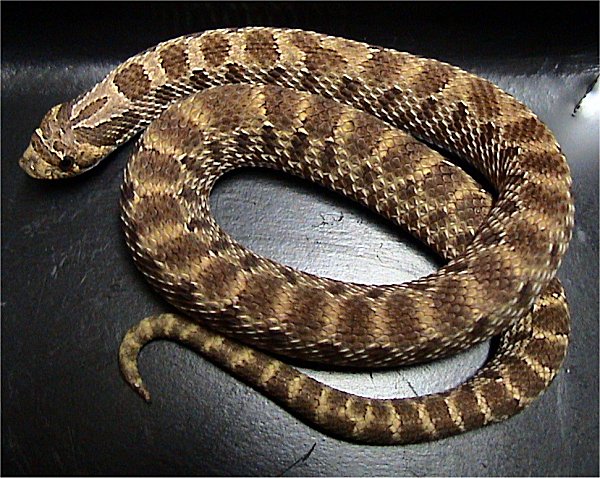Type the name of the breed you're looking for below
[wpdreams_ajaxsearchlite] Don't see the breed your're looking for? Click here and let us know!
Western Hognosed Snake
| Place of Origin and Range | Found from southern Saskatchewan and Alberta, Canada into Mexico. |
| Description | Western Hognosed snakes are relatively small, stout-bodied snakes. Ground colour may be yellow, brown, or reddish brown with a series of small, dark rectangular dorsal blotches and round lateral blotches. Their belly is darkly pigmented. |
| Morph Patterns Available | Yes |
| Adult Size | Can grow 2-4 feet(0.6-1.2m) |
| Accommodation | These snakes like plains and grassland. Mild humidity with loose earth for burrowing. You will always want to include a large dish for bathing and soaking in to improve shedding. Always include a day basking spot at 80'F(27'C). Along with multiple hides. The cage should be minimum as long as your snake and wide enough for it to turn with ease. These snakes are very active. |
| Lifespan | Can live 15-20 years |
| Feeding / Diet | In the wild, they feed predominately on amphibians, such as large and medium-sized tree frogs, as well as small or medium-sized toads and small lizards. They typically eat mice or rats. |
| Breeding | Western hog-nosed snakes have been observed in copulation as early as February and March. They are oviparous, with females laying 4-23 elongate, thin-shelled eggs in June–August. The eggs take approximately 60 days to hatch. |
| Other Considerations | Their colour and pattern is highly variable from subspecies to subspecies, although most specimens appear much like the infamous rattlesnake to the untrained eye. Snakes are relatively hardy low maintenance animals when kept in the correct environment, and require little day to day care other than feeding and cleaning out the tank as required. However, like all animals, they can still become sick or injured despite our best intentions to prevent this. |



